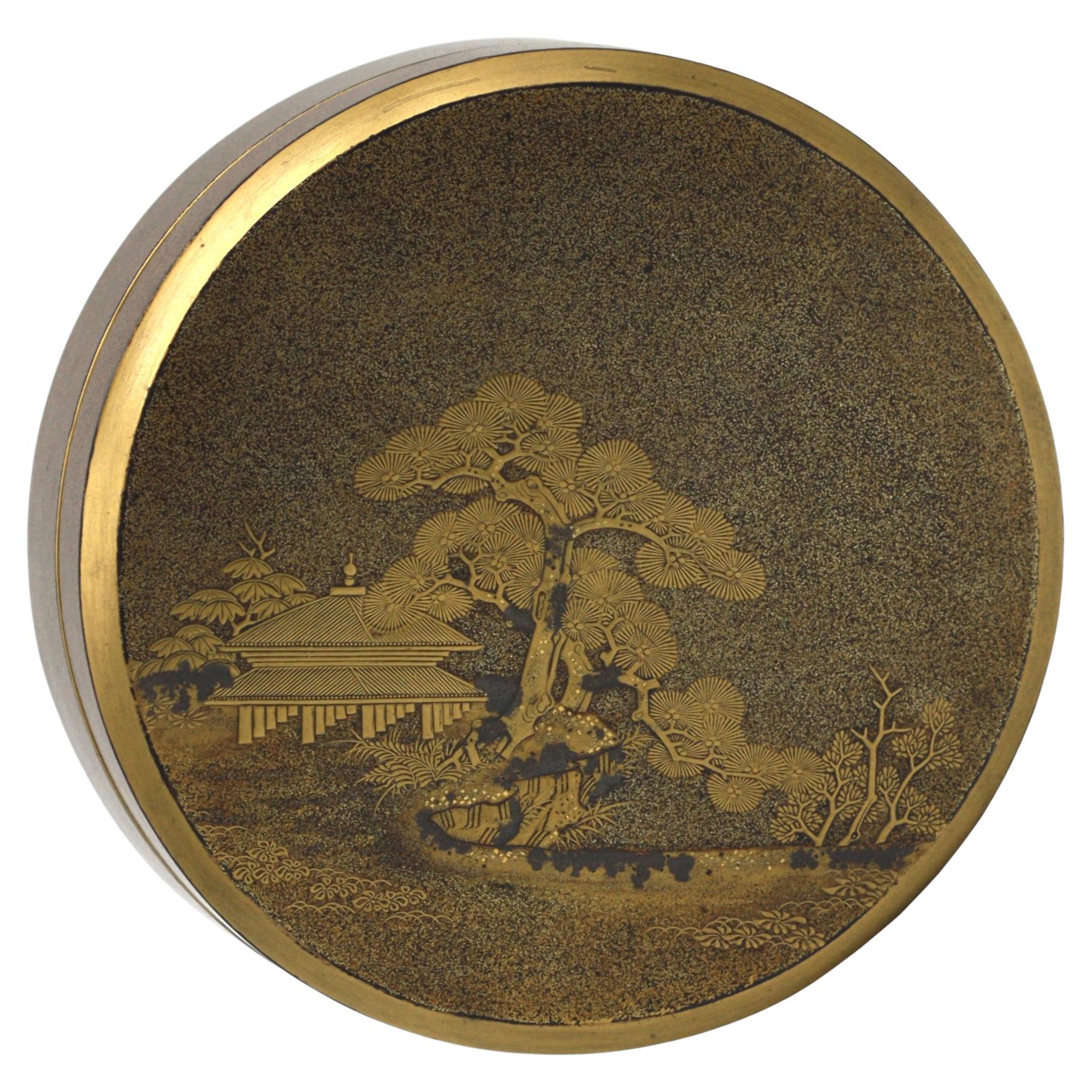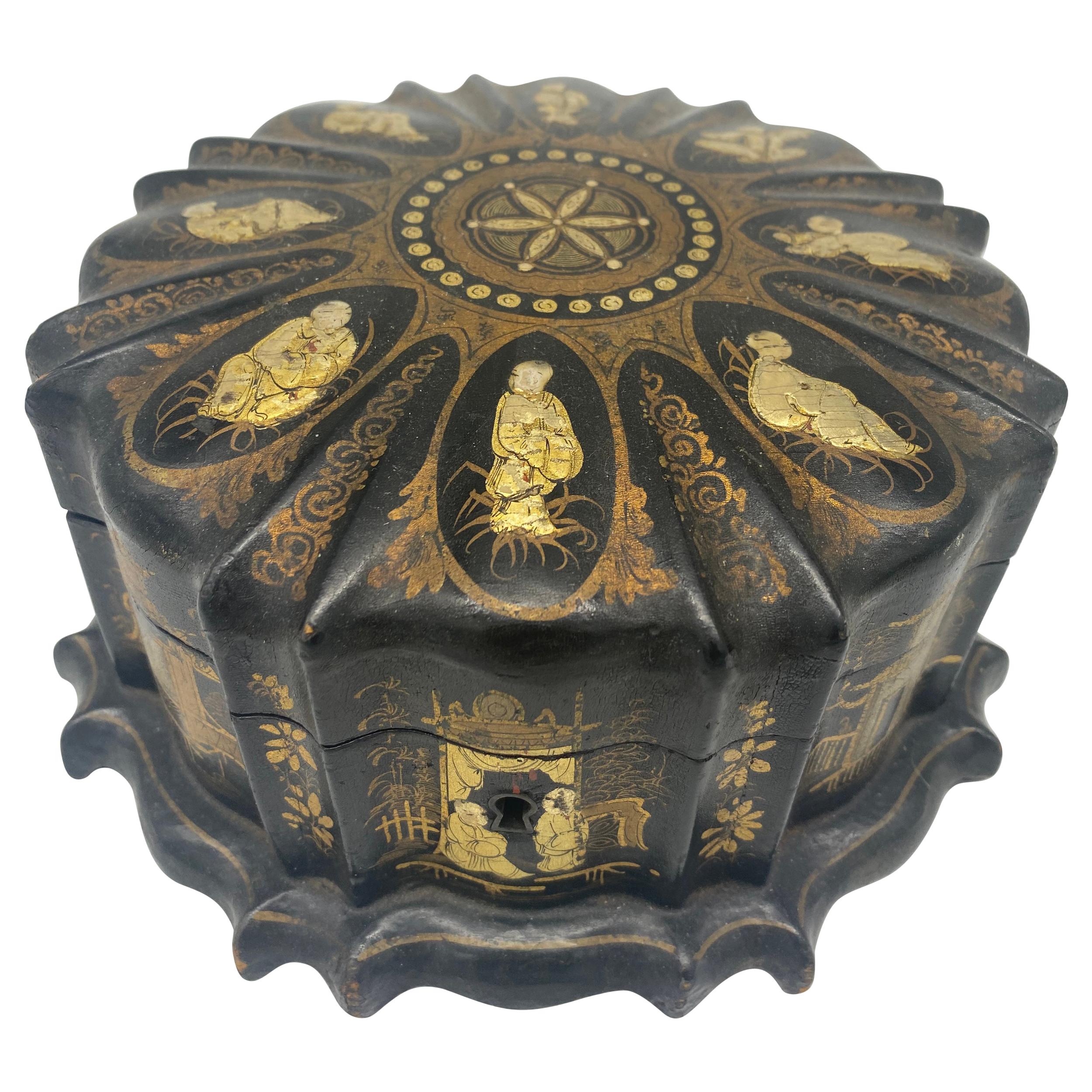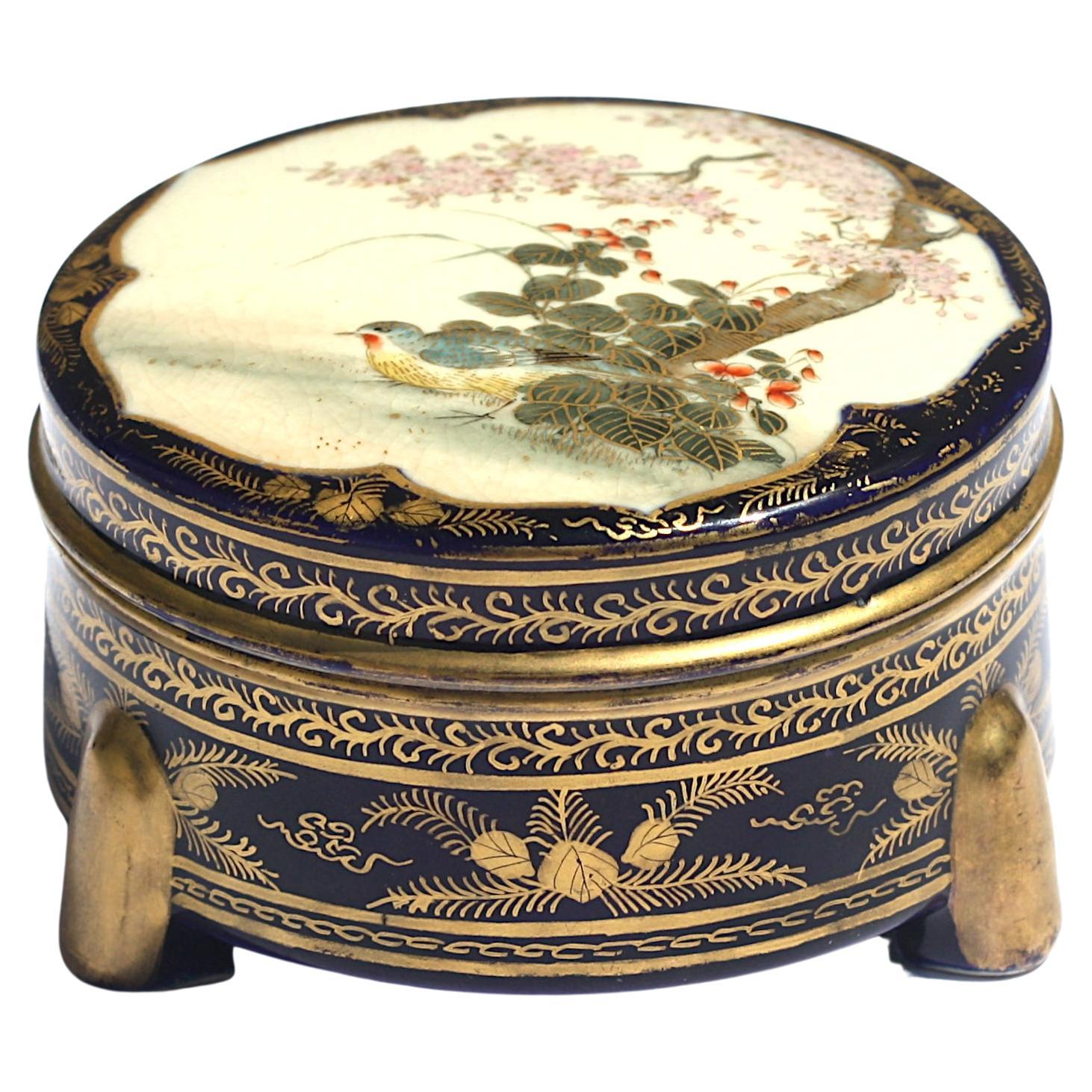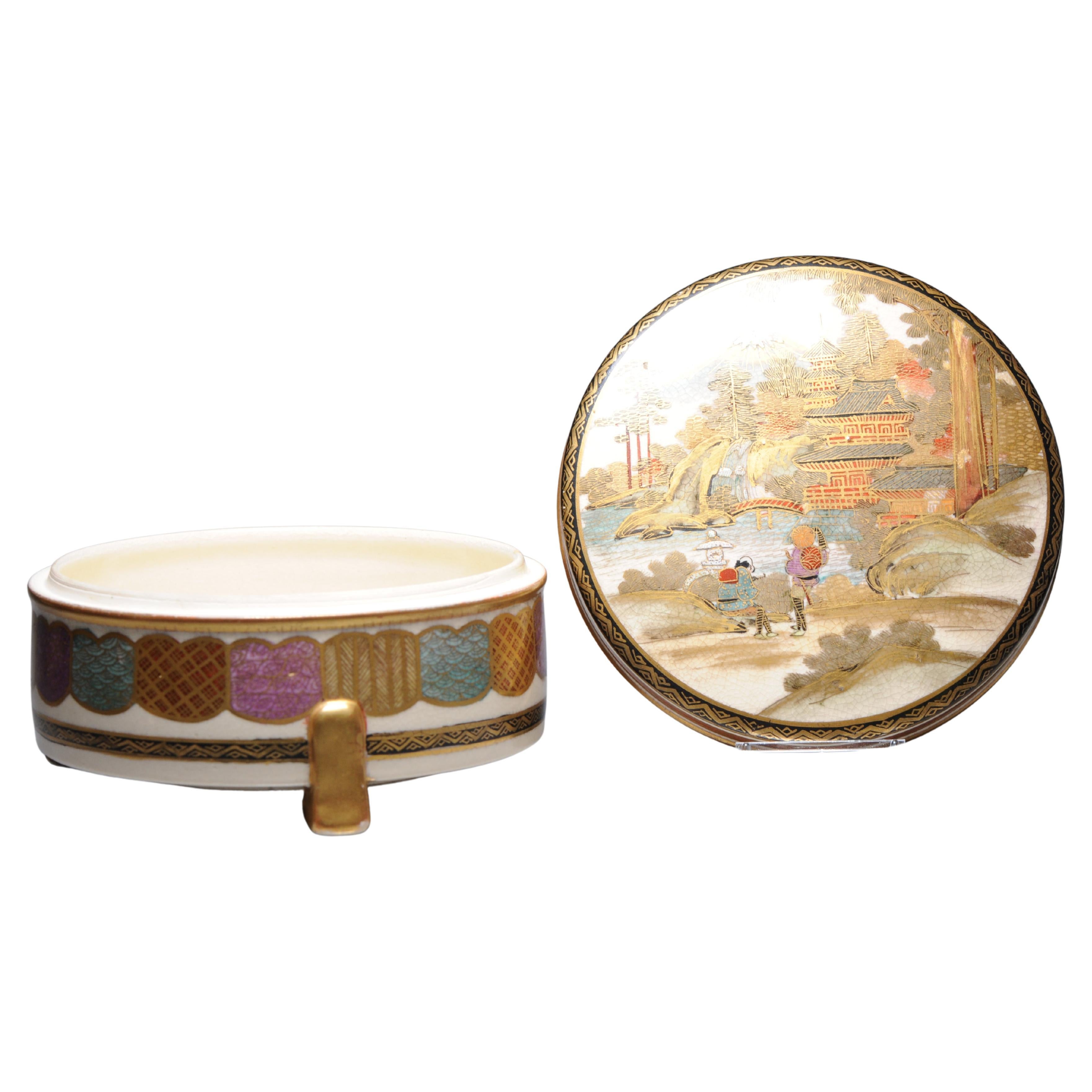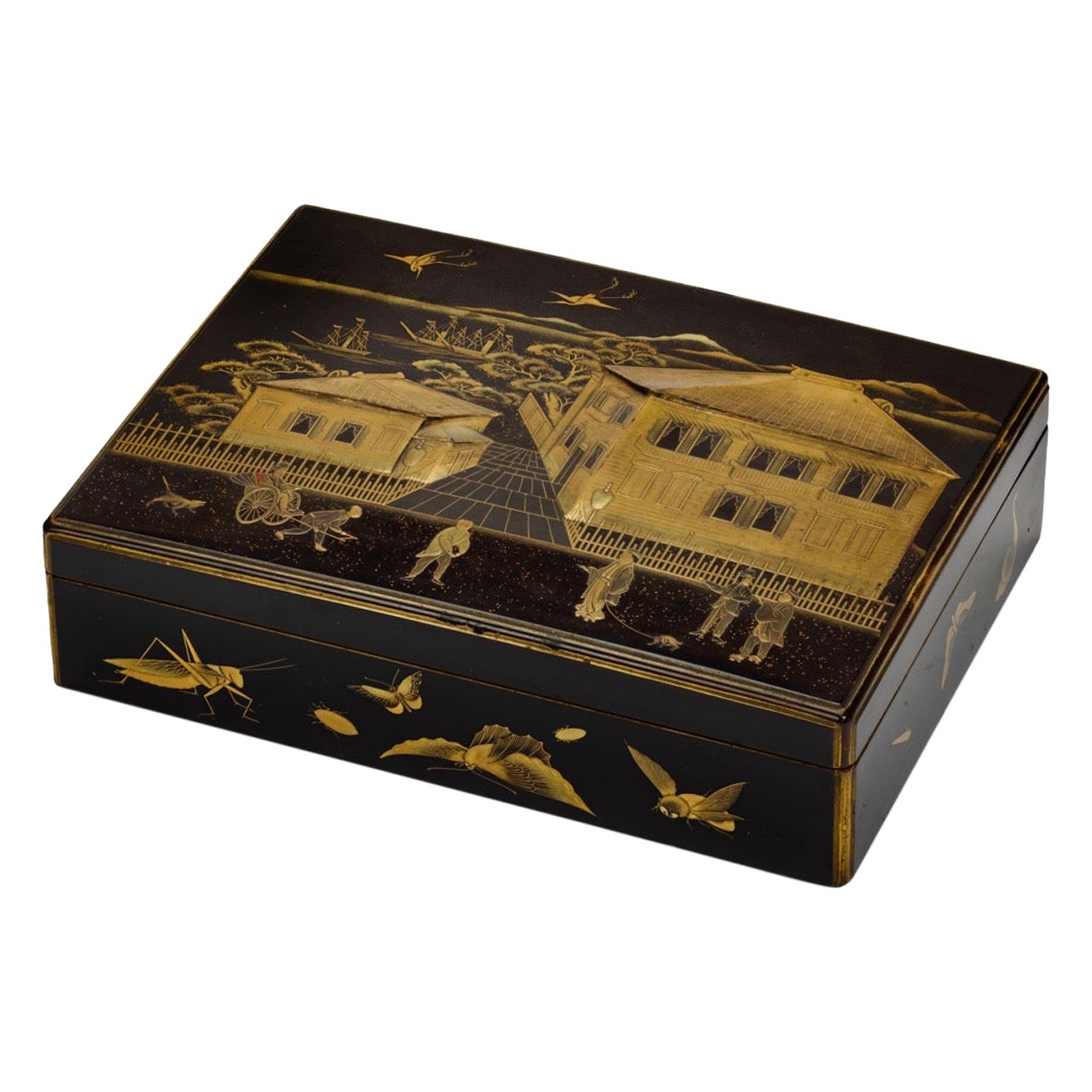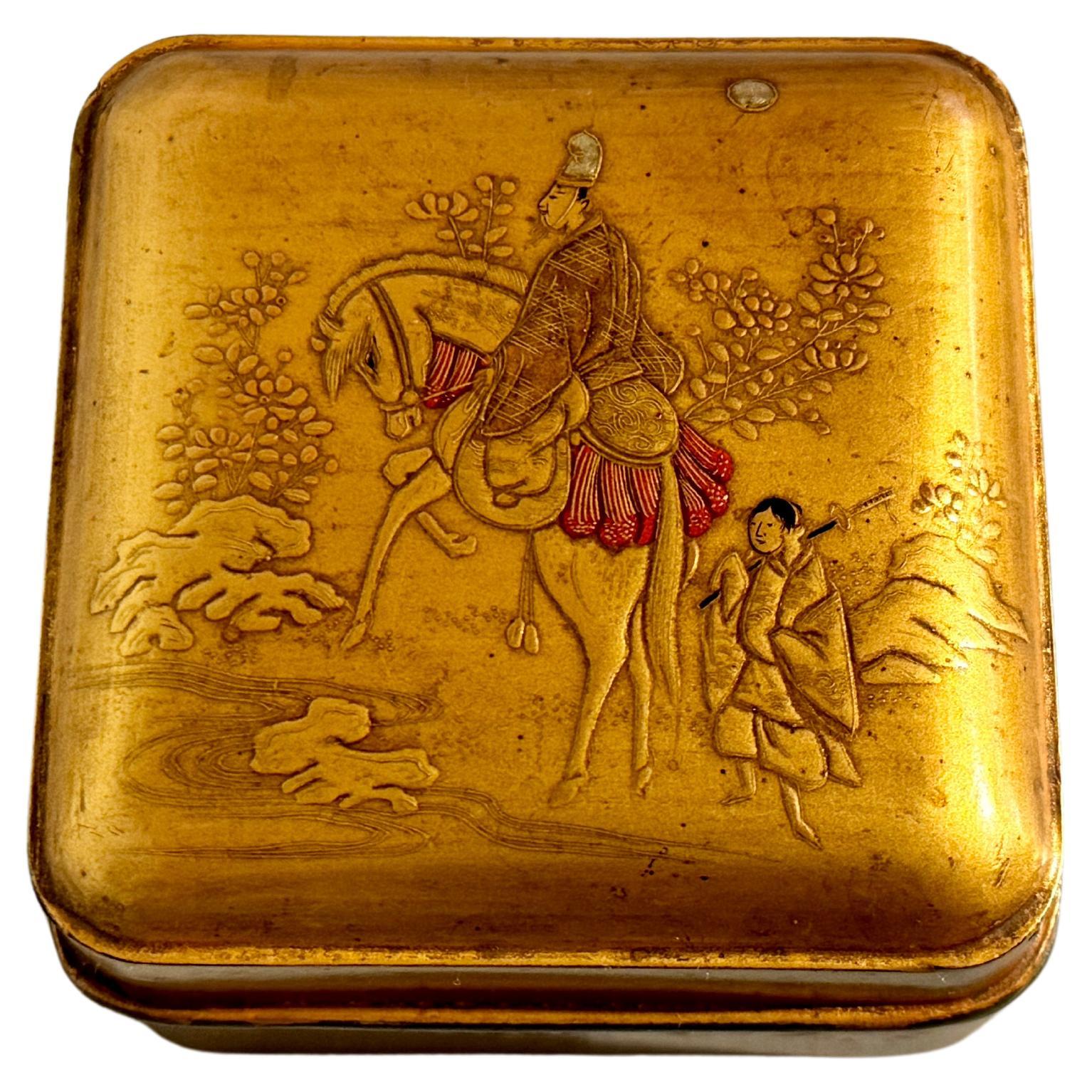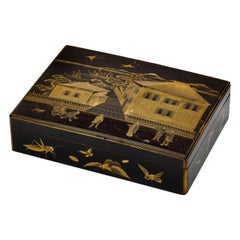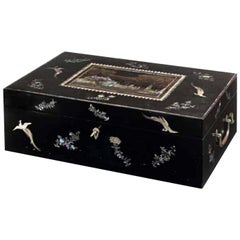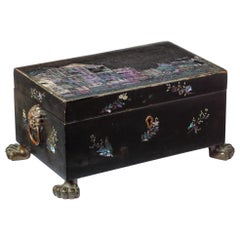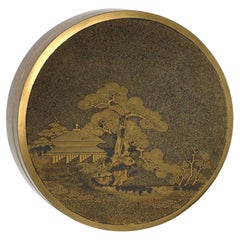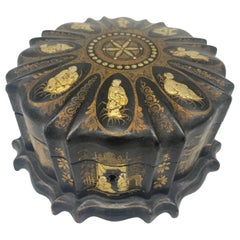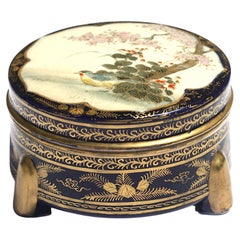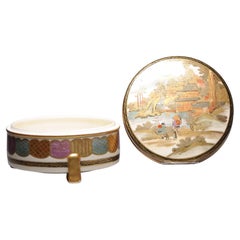Items Similar to A small Japanese export lacquer circular box with a depiction of the Muiderpoort
Want more images or videos?
Request additional images or videos from the seller
1 of 3
A small Japanese export lacquer circular box with a depiction of the Muiderpoort
$4,564.33
£3,399
€3,840
CA$6,301.67
A$6,986.33
CHF 3,671.59
MX$85,501.26
NOK 45,854.43
SEK 43,038.97
DKK 29,236.48
About the Item
Nagasaki, Edo period, 1st half 19th century
Of circular form decorated in gold hiramaki-e on a black-lacquered ground, the lid depicts the Muiderpoort, a city gate of Amsterdam, after an engraving by Carel Frederik Bendorp (1736-1814) made after an original work by van Jan Bulthuis (1750-1801). The sides are decorated with cherry blossoms, and the underside has sprays of autumnal plants.
Diam. 8 cm
Provenance:
Kollenburg Antiquairs, Oirschot (28 November 2006)
Collection Cornelis Pauw van Pauwvliet, Amsterdam
The Muiderpoort, which is a building of classical design, is located between the inner and outer moats of the old eastern city walls – the Singelgracht and the then Lijnbaansgracht – and is the only surviving example of the gates that initially gave access to the city of Amsterdam in the 17th and 18th centuries.
- Dimensions:Height: 0.4 in (1 cm)Diameter: 3.15 in (8 cm)
- Materials and Techniques:
- Place of Origin:
- Period:
- Date of Manufacture:1st half 19th century
- Condition:Wear consistent with age and use.
- Seller Location:Amsterdam, NL
- Reference Number:1stDibs: LU5458243191292
About the Seller
5.0
Recognized Seller
These prestigious sellers are industry leaders and represent the highest echelon for item quality and design.
Established in 1985
1stDibs seller since 2020
23 sales on 1stDibs
Typical response time: 5 hours
- ShippingRetrieving quote...Shipping from: Maastricht, Netherlands
- Return Policy
Authenticity Guarantee
In the unlikely event there’s an issue with an item’s authenticity, contact us within 1 year for a full refund. DetailsMoney-Back Guarantee
If your item is not as described, is damaged in transit, or does not arrive, contact us within 7 days for a full refund. Details24-Hour Cancellation
You have a 24-hour grace period in which to reconsider your purchase, with no questions asked.Vetted Professional Sellers
Our world-class sellers must adhere to strict standards for service and quality, maintaining the integrity of our listings.Price-Match Guarantee
If you find that a seller listed the same item for a lower price elsewhere, we’ll match it.Trusted Global Delivery
Our best-in-class carrier network provides specialized shipping options worldwide, including custom delivery.More From This Seller
View AllA Japanese export lacquer box with depiction of the Grand Hotel, Yokohama
Located in Amsterdam, NL
Meiji period, circa 1873-1887
The black lacquered box decorated in maki-e and hiramaki-e gold, with on the lid a European style building complex and several Japanese and European figures walking along a street in the foreground. The sides are finely decorated with several insects and the inside with several compartments and nashiji decoration.
H. 7.4 x W. 29 x D. 25.7 cm
After the Americans forced Japan to open their harbours to the outside world and take part in international treaty and trade around the mid 19th century, the formerly feudal society rapidly changed. Japan was now focussing on an industrial future. One of the major international ports was Yokohama with its foreign embassies and warehouses - which attracted a great number of visitors of all sorts. For the higher society visiting Japan for the first time a new and ‘Western’ hotel had to be realised; hence the construction of The Grand Hotel on Kaigandori.
The hotel was opened on August 16, 1873 (Meiji 6) and was soon considered the height of Western culture and elegance in Japan. The building probably depicted on this box, designed by American architect Richard P. Bridgens (リチャード・ブリジェンス, 1819 -1891), is the original hotel...
Category
Antique 19th Century Japanese Lacquer
Materials
Gold
A superb Japanese export lacquer writing box
Located in Amsterdam, NL
Kyoto, circa 1680
The writing box has bevelled edges and a kabusebuta (overhanging lid), and is completely covered in black lacquer in maki-e and decorated in gold, silver and red h...
Category
Antique 17th Century Japanese Lacquer
Materials
Lacquer
Japanese Colonial Nagsaki Lacquer Box with Depiction of Amsterdam, 1830-1840
Located in Amsterdam, NL
An important Japanese lacquer box with a view of The 'Nieuwe Stadsherberg Van Amsterdam
Nagasaki, Edo-period, 1830-1840
The black lacquered wood box, decorated in gold and inla...
Category
Antique Early 19th Century Japanese Decorative Boxes
Materials
Mother-of-Pearl, Wood
$29,715 / item
Free Shipping
Japanese Nagasaki Export Lacquer Box with Depiction of the 'Trippenhuis'
Located in Amsterdam, NL
A Japanese Nagasaki export lacquer box with mother-of-pearl depiction of the Amsterdam ‘Trippenhuis’
Edo-period, circa 1830
H. 12.5 x W. 24...
Category
Antique 19th Century Japanese Edo Lacquer
Materials
Mother-of-Pearl, Lacquer
Rare 17th Century Japanese Export Lacquer Medical Instrument Box
Located in Amsterdam, NL
A rare Japanese export lacquer medical instrument box
Edo-period, 1650-1700
L. 19 x W. 6 x H. 8.5 cm
This unconventionally shaped lacquer b...
Category
Antique 17th Century Japanese Edo Lacquer
Materials
Gold
An oval Japanese export lacquer tray
Located in Amsterdam, NL
An oval Japanese export lacquer tray decorated with the alliance of the coats of arms of the Mooyaart and Pauw families
Edo-period, circa 1798
L. 51.5 x B. 37.5 x H.3.2 cm
This tra...
Category
Antique 18th Century Japanese Lacquer
Materials
Lacquer
You May Also Like
Japanese Gilt Lacquer Covered Sweet Meat Box
Located in West Palm Beach, FL
Japanese Gilt Lacquer Covered Sweet Meat Box
Meiji Period. The circular box decorated with a raised evergreen tree before a pavilion, opening to multip...
Category
20th Century Antiquities
Materials
Giltwood
19th Century Chinese Lacquer Jewelry Box
Located in Brea, CA
19th century Qing Dynasty Chinese lacquer jewelry box detailed with various genre scenes in gold detail. Pink silk lining, can be locked, does not ...
Category
Antique 19th Century Chinese Qing Lacquer
Materials
Lacquer
Japanese Satsuma Earthenware Circular Box and Cover
Located in West Palm Beach, FL
A Japanese Satsuma earthenware circular box and cover
decorated in enamels and gilt with cover showing birds and trees reserved on foliate scrolls on a m...
Category
20th Century International Style Antiquities
Materials
Ceramic
Antique ca 1900 Japanese Meiji or Taisho Satsuma Powder Box
Located in Amsterdam, Noord Holland
Description
Sharing with you is this nice satsuma powder box with landscape pagode scene
Marked at base: Unreadable
Condition
Overall Condition 1 small restoration to rim b...
Category
Antique 19th Century Japanese Meiji Ceramics
Materials
Porcelain
$853 Sale Price
20% Off
Japanese Lacquer Box, Kogo, Tale of Genji, Edo Period, early 19th century, Japan
Located in Austin, TX
A fine Japanese small lacquer box for precious incense, kogo, Edo period, mid 19th century, Japan.
The small box of gold lacquer and wonderfully dec...
Category
Antique Early 19th Century Japanese Edo Lacquer
Materials
Pewter
Antique Round Hand Painted Compartment Jewelry Box 1930's
Located in Douglas Manor, NY
Round hand painted with birds and flowers compartment jewelry box.
Category
Vintage 1930s Jewelry Boxes
Materials
Fruitwood, Paint
More Ways To Browse
Black Gold Lacquer
Black Lacquer Wall Art
Small Asian Box
Japanese Lacquer Boxes
Cherry Blossom Design
18th Century Japanned Box
Black Lacquer Asian Wall Art
Nagasaki Lacquer
Cinnabar Lacquer Furniture
Cinnabar Lacquer
Red Cinnabar
Japanese Family Crest
Japanese Lacquer Pearl
Carved Cinnabar
Japanese Lacquerware
Meiji Lacquer Box
Japanese Lacquer And Mother Of Pearl
Japanese Mother Of Pearl Art
